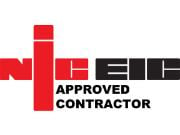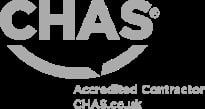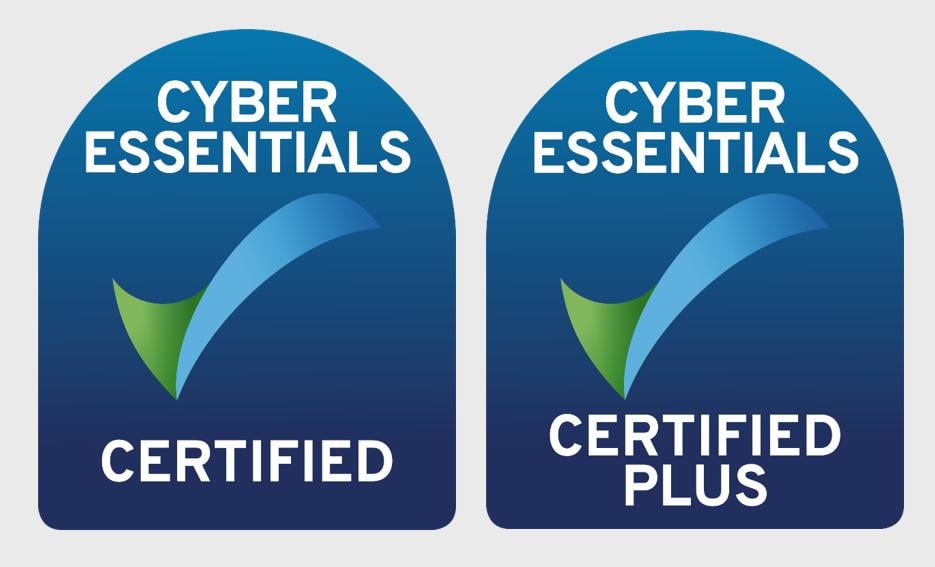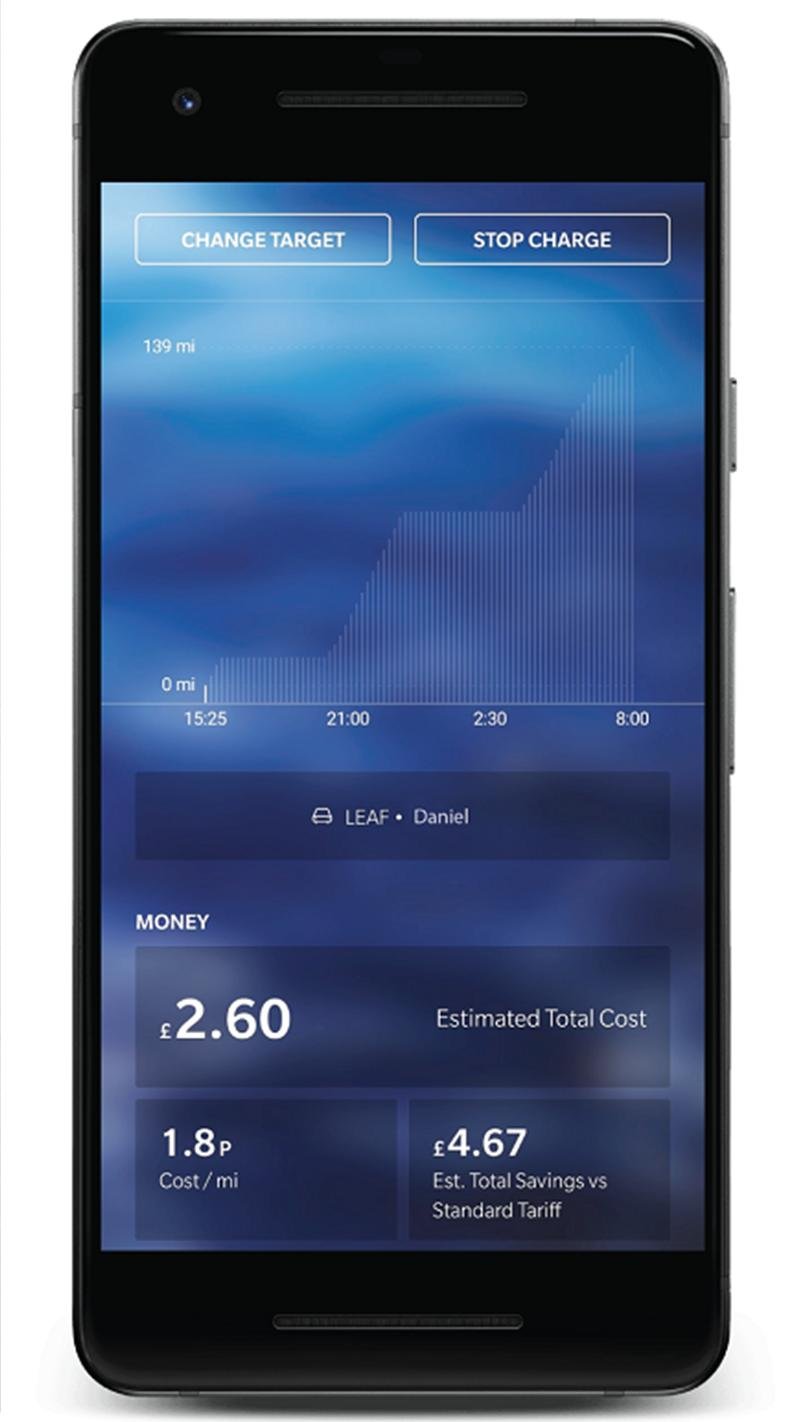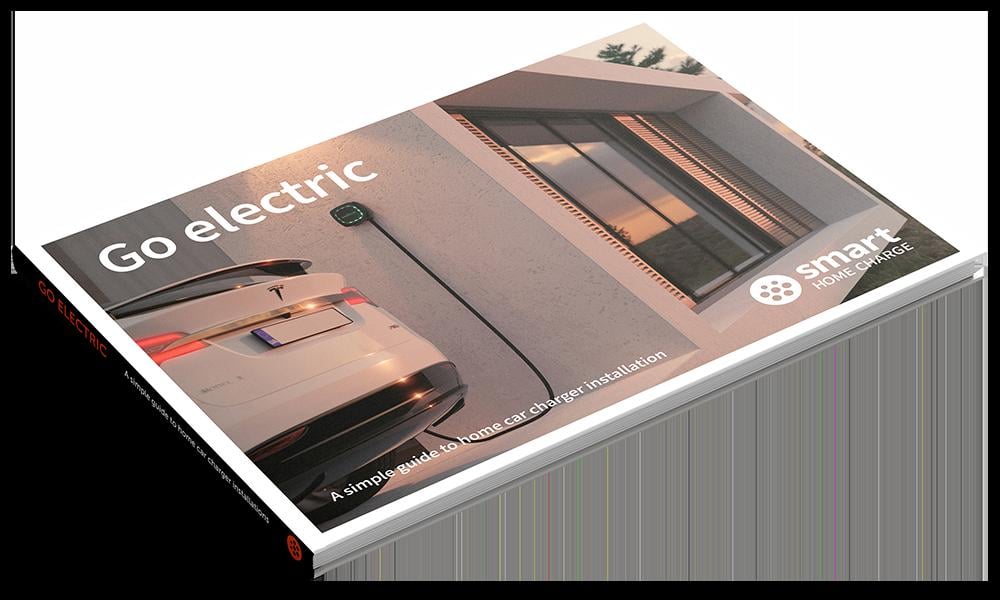
You can unsubscribe at any time.
You are signing up to receive the Smart Home Charge newsletter. Terms and conditions apply.
Access our FREE guide to home charger installation.
- Your FREE and exclusive interactive Go Electric guide
- The latest EV charger reviews
- New car releases and EV news
- App set-up guides and more electric car charging tips
Access our FREE guide to home charger installation.

- Your FREE and exclusive interactive Go Electric guide
- The latest EV charger reviews
- New car releases and EV news
- App set-up guides and more electric car charging tips
You can unsubscribe at any time.
You are signing up to receive the Smart Home Charge newsletter. Terms and conditions apply.
Get to know your Ohme Home
Set up a schedule
This is the main way you will charge your car and let the Ohme save you money.
You can set multiple schedules up to suit different scenarios if you like, but try setting up one schedule initially called “Weekday Charging”.
- Click the blue circle in the bottom corner and name the schedule
- Select “Weekdays”
- Set a target range of 100 miles (or whatever you need each day) using the slider
- Set a finish time of 7am, for example, or whichever time you need the car charged by each morning
- Click “Create” or “Save” and make sure the schedule is on. It should have a blue circle next to it.
Add a price cap to charge sessions
Ohme can automatically charge your car at the cheapest rates and save you money but you will need to select this option within the app. Follow these simple steps:
- Click the menu in the top left corner of the app
- Select “Settings” at the bottom of the menu
- Scroll down to the option that says “Save Money” and simply toggle the grey circle icon so it is blue.
This means Ohme will do as much charging as possible when electricity is cheap. It will, however, prioritise your charging target that you set in your schedule. So, even if it is unable to meet your charging target within your cheap electricity rates alone the Ohme will continue to charge until it reaches your desired goal.
Set a price cap
If you’d like the Ohme to only charge your car during charge schedules at your tariff’s cheapest rates, regardless of your target range, then there’s an easy way to do this. Follow these steps:
- Click the menu in the top left corner of the app
- Select the option “charge schedule”
- Tap the cog in the top right hand corner
- Tap the ‘limit charging over a certain cost’ toggle icon
- In the ‘cost’ box, enter the price rate that you would like your Ohme Home to stop charging at.
- Tap save changes.
Remember: if you select this option it will override your charging schedule and Ohme will stop charging once your electricity rate goes above this price. Therefore it may not meet your desired target range. Keep this in mind if you have a long journey planned as you may need to disable this setting. The Ohme app will alert you if it cannot reach the amount of miles you want.
Adding your energy provider and tariff
The Ohme has the ability to link up to your energy tariff, this gives you the ability to see how much each charge session costed as well as what type of energy has gone into your vehicle (i.e. renewable or non-renewable). Activating this feature means your Ohme will know when your energy is at its cheapest, so it can charge your when energy prices are low if you want it to - though this depends on what energy tariff and supplier you have.
To add your energy provider and tariff you will need to:
If you have charged your vehicle using the Ohme Home and you're not seeing how much your charge costed you then you might not have selected your energy tariff. To do this:
- Open the Ohme App
- Tap the menu button
- Select the “tariff” option (If you have successfully paired the tariff to your app this will option will show “Tariff: Your Tariff”)
- Choose the supplier you are currently with.
- Enter your postcode.
- Some suppliers offer multiple tariffs and if yours is one of them then you’ll need to select the tariff you are currently with (If your tariff is doesn’t appear on the list then please see the solution in the troubleshooting section).
After confirmation, set the “never charge above rate” to the price you want your charger to be limited to if you want to do so.
Adding your vehicle
To give you accurate data on your charging sessions, Ohme recommends that you add your vehicle onto your account.
Ohme can communicate with some vehicles using an API (Application Programming Interface), which is a system that allows the charger to access information such as the vehicle’s state of charge (SOC) and battery level. Sadly, only a handful of manufacturees disclose their vehicle’s API information. These manufacturers are:
- BMW
- Hyundai
- Jaguar
- Land Rover
- Kia
- Mini
- Nissan
- Renault
- Tesla
If you don’t have a vehicle from a manufacturer that discloses their vehicle’s API then fear not, you’ll still be able to access many of the features that the Ohme Home has to offer but they might require a few additional steps.
For example, say if you want to charge your vehicle to 80% of its battery after your commute to and from work. You’ll need to look at how much charge you have leftover after your commute and adjust your charge schedule so that it adds the percentage needed to reach the target.
Adding your vehicle from a manufacturer that shares their API information
- Tap the menu button in your Ohme App.
- Tap the “settings” option
- Tap “change car”
- Select your vehicle's manufacturer.
- If you have an online account with your vehicle’s manufacturer, tap account sign in, and enter your credentials. Skip to step 8
- If you don’t have an online account with your manufacturer, tap connect without account.
- Select your vehicle’s model
- Tap done on the confirmation screen.
Adding your vehicle from a manufacturer that doesn’t share their API information
- Tap the menu button in your Ohme App.
- Tap the “settings” option
- Tap “change car”
- Select the “other” option at the bottom right corner
- Select your vehicle’s manufacturer and tap either "account sign in" if you have an account with your vehicle's manufacturer or "connect without account" if you don't
- Choose the model of your vehicle (Pay attention to the battery capacity and kW input. For example, if you have a 2011 24kWh Nissan leaf with a 3.3kW charger onboard select “Leaf 24kWh / 3.3kW 2011”)
- Tap done on the confirmation screen.
Need to contact Ohme?
If none of the advice below works then you might need to contact Ohme by via:
Email: [email protected]
Telephone: +44 (0) 20 3375 1586
You can also visit their recourses page by clicking here.
I am interested in upgrading my Ohme Home
If you are interested in upgrading your now discontinued Ohme Home, be sure to check out the Ohme Home Pro or Ohme ePod.
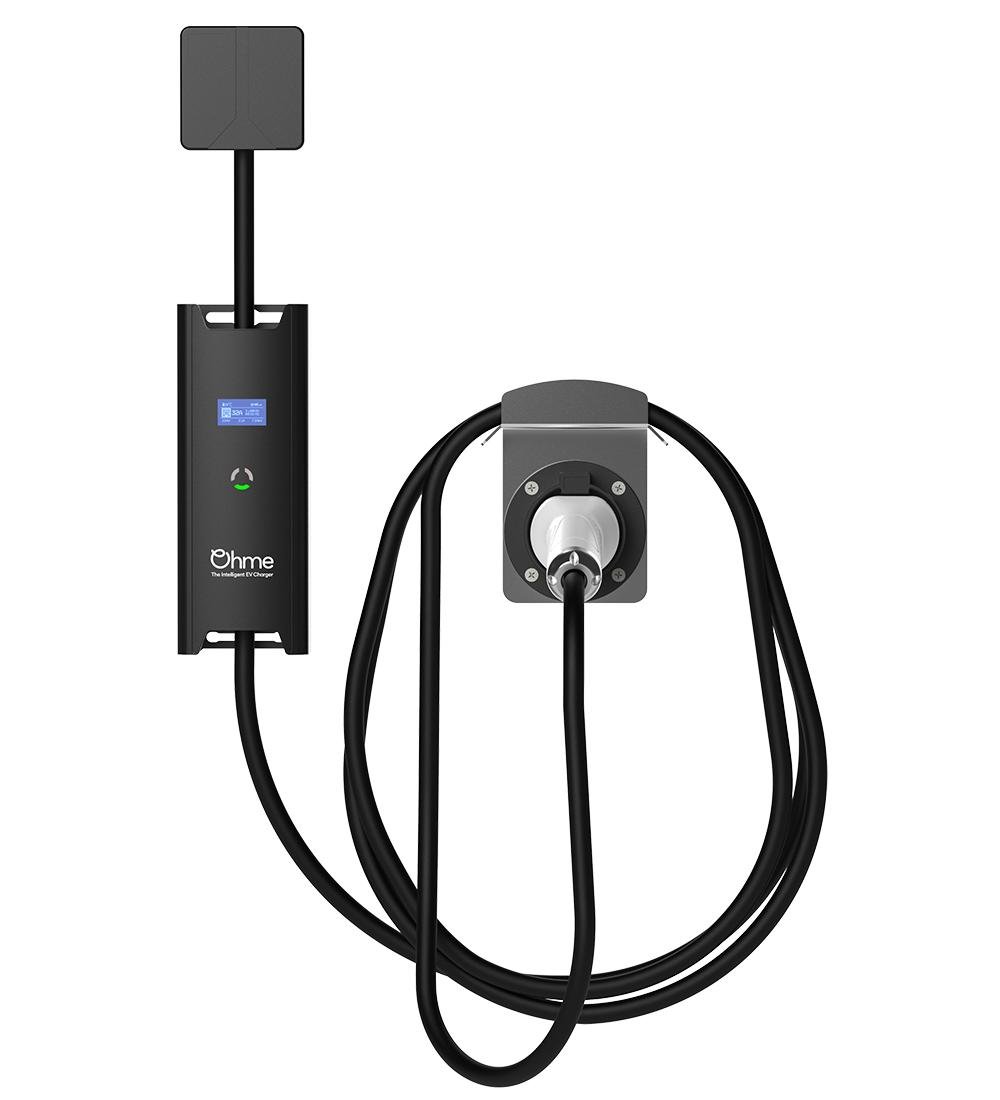
Charger isn't working? Try these steps first!
Is there power to the unit?
The best way to tell if the Ohme Home is receiving power is by checking if the LED screen on the front of the unit is lit and displaying information. If the screen is unlit, then this could mean that there is no current reaching the unit. If you are finding that this is the case with your Ohme Home, then we advise that you check that the circuit breaker to your unit isn't off or tripped.
If the circuit breaker is set to the on position but your charger still does not power on, please contact ohme via:
Email: [email protected]
Tel: +44 (0) 20 3375 1586
Can you charge your car at all?
If you have not paired your Ohme Home with your Ohme app, the unit will act as a 'dumb charger' and should start charging your unit straight away. If you have paired your Ohme app with your Ohme Home, you should be able to go onto the main screen of your Ohme app to find out if your unit has recognised the vehicle you have plugged into it. After which, you'll be able to tell the Ohme Home to start charging or obey your charge schedules via options on the app.
If you can't do any of the above or your vehicle doesn't start charging after you have confirmed that you want to start a charge session then it means that there is a fault with the unit.
Is the cable plugged in correctly?
As part of a safety and security mechanism, vehicles will often lock a plugged-in cable into place during a charge session in order to prevent forced unplugging. If the Ohme's cable is not properly inserted into your vehicle, the locking mechanism in the vehicle's charging port might not lock on to the cable properly and therefore prevent a successful charge.
If you think this might have happened to you, we advise that you unplug the cable from your vehicle and plug it back in again, hold it in place until you hear the locking mechanism on your vehicle grab the charging cable.
Is the vehicle charging rate not what you expected?
Most vehicles can accept a charge rate of up to a 7.4kW AC using a typical dedicated home charge point, while some can accept a higher rate (up to 22kW) if you have a three-phase charger and three-phase electrical supply at home, though this is rare in the UK.
However, some electric cars, such as the original Nissan Leaf, are limited to lower charging rate. For example, some vehicles are limited to 6.6kW or even 3.7kW which means no matter what charge speed your Ohme Home outputs, your vehicle will only accept its own max limit.
This means your car may be charging "slower" than the 7.4kW advertised by the EV charging unit, but this is perfectly normal if your vehicle has its own charging limit.
You can check your vehicle's charge speed by finding it on our vehicle database. You should also be able to find your vehicle's max charge speed in its manual.
Check the vehicle's onboard charging settings
If you know your vehicle can accept the max charge speed offered by your Ohme Home, but it's still charging at a slower rate then it's worth checking the settings as some cars can manually limit charging speed as a menu option. We recommend you check your vehicle's settings to make sure that the limiter is either off or set to the max output of your Ohme Home.
Is your vehicle's settings clashing with your charger app schedule?
If you are finding your vehicle hasn't charged fully or at all after a charge schedule, it could be due to the vehicle itself. Some vehicles have built-in charge scheduling features which can interfere with and "contradict" the Ohme Homes' own charge schedule. Every vehicle is different, so we advise checking the manual that came with your vehicle if you are unsure how to turn off or modify its charge scheduling.
Have you tried resetting the unit?
Now we may be sounding like your local PC repair helpline when saying this but, have you tried turning it off and on again? Sometimes all the charger needs is a good old-fashioned reset (Also known as ‘power cycling’ in the EV world), and below is how you do it.
- Locate the circuit breaker that your charger has been connected to, this can either be found within your main consumer unit or installed as a separate switch.
- Once you have found the switch, pull it down to the off position for 10 seconds. This will allow any residual charge to drain away and the charger to power down completely.
- After waiting 10 seconds, push the switch back up to the “on” position and wait for the charger to power back on.
- If a successful connection has been established, the Ohme will display a mobile network strength indicator and a pair of up and down arrows in the top right of its LED screen.
Update the app
The Ohme app should be keeping itself up to date with the latest firmware automatically, but it’s always worth checking to see if the app is up to date via the app store on the iPhone or the Google Play on Android.
It goes without saying, if your problem is that your Ohme is not connecting to mobile data (You can check this by looking at the signal strength indicator located in the top right of the LED screen on the front of the unit) then that is a separate issue that needs fixing.
Ohme Home Advanced Troubleshooting
Ohme Home Charger acts as a “dumb charger” and charges my vehicle as soon as I plug it in rather than waiting for the set off-peak times or charge schedules.
First things first, make sure that you have added your energy tariff and set a charge schedule with a price cap. If you're unsure of how to do this then please see the set-up section below or watch our video on how to set up a schedule on your Ohme Home.
If you have done the above and the issue persists then the next thing you will want to check is your charger’s network connection. To do this, look for a mobile signal strength indicator and an "up and down arrow" icon located in the top right of the charger’s LED screen. Below is what you should see on screen:
If neither are showing then this means that the charger is not connected to Ohme’s server and therefore not receiving information such as charge schedules from your account. If the connection hasn’t been re-established even after resetting the charger then this could be the result of a faulty unit and you will need to contact Ohme regarding the issue.
The lights on my wall charger are cycling red, amber and green; the charger is also not charging
If your Ohme Home is doing this then that means you have set a charge schedule but haven’t set the parameters (e.g. your tariff’s energy prices, a price cap, charging using renewable energy, etc). For more information on how to set these parameters please see the Get to know your Ohme Home section above.
My car charged outside of my tariff’s off-peak periods
The Ohme Home will always aim to charge your vehicle within your tariff’s off-peak periods if you have the feature set however, it will not be limited to these times. As a result, your Ohme Home might use on-peak hours to reach the target charge percentage set in your schedule. Fortunately, you can stop this from happening, all you’ll need to do is set up a price cap in your Ohme App. To do this, you’ll need to open the Ohme app on the device your charger is linked to, tap the menu button then tap where it says tariff. Here you’ll be able to set a price cap that the Ohme Home will limit itself to when it’s charging your vehicle (Please note that you will need to select your energy tariff before you can set a price cap).
The Ohme app won’t display my vehicle’s state of charge
When it comes to the Ohme Home, some features on the app work better with some vehicles than others. This is because Ohme communicates with vehicles using an API (Application Programming Interface), which is a system that allows the charger to access information such as the vehicle’s state of charge (SOC) and battery level. Sadly, only a handful of manufactures disclose their vehicle’s API information. These manufacturers are:
- Renault
- Tesla
- Nissan
- Jaguar
- Land Rover
- Hyundai
- BMW
- Kia
If you have a vehicle manufactured by one of the brands above then you’re in luck! Once set up, you’ll be able to do things like set charge schedules that charge your EV to a specific percentage.
If you don’t have a vehicle from a manufacturer that discloses their vehicle’s API then fear not, you’ll still be able to access many of the features that the Ohme Home has to offer but they might require a few additional steps.
For example, say if you want to charge your vehicle to 80% of its battery after your commute to and from work. You’ll need to look at how much charge you have leftover after your commute and adjust your charge schedule so that it adds the percentage needed to reach the target.
My energy tariff isn’t listed in the tariff options
Ohme takes most energy providers into account when it comes to setting up the price cap on your charger, however, there is always a chance that your provider isn’t listed, especially if they are one of the less well-known providers. If you don’t see your tariff listed then you’ll need to enter your details manually. To do this:
Select the tariff option in the menu bar.
Scroll down to the bottom until you see the “Create new tariff” option
Select either “Fixed price tariff” or “Variable price tariff” depending on your tariff type

Variable tariffs
Enter the start and end of your off-peak hours (This timespan can be found on your electricity bill. If it isn’t, contact your provider).
Enter the price per kilowatt (p/kWh) of your off-peak hours (Again this can be found on your electricity bill or by contacting your provider)
Enter the price per kilowatt (p/kWh) you pay at all other times outside of your off-peak hours and press continue.
Chose your time zone and select if your meter runs on daylight savings (If you are unsure if your meter does or not, please contact your provider). After this, tap continue
Enter the name of your tariff (i.e. E.on Charge) and tap save.


Fixed Tariffs
Enter the price per kilowatt-hour that your provider charges (this can be found either on your energy bill or by contacting your provider) and tap continue
Enter the time zone you are in and select if your meter runs on daylight savings (If you are unsure if your meter does or not, please contact your provider). Once done, tap continue.
Enter the name of your tariff (i.e. e.on Fix Online v44) and tap save.

After entering your variable or fixed tariff, you should get a confirmation screen appear telling you that your tariff has been set up successfully. After you’ve tapped “okay” on the confirmation screen, you’ll be greeted with the options to edit or change your tariff.
I’m getting error messages telling me that my car is charging lower than expected
There are a few reasons as to why this can happen:
Firstly, some cars can limit the level of charge they take in. If you have this feature enabled and the limit is set to lower than the level of charge your Ohme Home is outputting then you will receive an error message on your Ohme app. To fix this, you’ll need to go into your vehicle’s charge settings (Each manufacturer does this differently so if in doubt, check your owners manual) and either turn the limit off or set it so that the charge limit matches the Ohme Home’s charge output (usually 7.4kw or 22kw depending on if have chosen to install the three-phase version of the charger).
Another reason why this problem can occur is because you might have selected a vehicle model on the app that has a higher charging capacity than the vehicle you own. For example, if you have a 2014 Nissan Leaf with a 3.3kw charger onboard and you select the version of the Leaf with the optional 6.6kw charger onboard. With the charger thinking you have a higher charger capacity on your vehicle than your vehicle actually has, the Ohme Home will base its charge schedule calculations on that higher charge output which triggers an error message when it can't reach that charge capacity.
To fix this, you’ll need to:
If the manufacturer shares their API information
Tap the menu button in your Ohme App.
Tap the “settings” option
Tap “change car”
Select your vehicle's manufacturer.
If you have an online account with your vehicle’s manufacturer, tap account sign in, and enter your credentials. Skip to step 8
If you don’t have an online account with your manufacturer, tap connect without account.
Select your vehicle’s model
Tap done on the confirmation screen.


If the manufacturer doesn’t share their API information
Tap the menu button in your Ohme App.
Tap the “settings” option
Tap “change car”
Select the “other” option at the bottom right corner
Select your vehicle’s manufacturer and tap either "account sign in" if you have an account with your vehicle's manufacturer or "connect without account" if you don't
Choose the model of your vehicle (Pay attention to the battery capacity and kW input. For example, if you have a 2011 24kWh Nissan leaf with a 3.3kW charger onboard select “Leaf 24kWh / 3.3kW 2011”)


Tap done on the confirmation screen.
The problem with my unit is not listed on here or the advice given has not solved my issue
If none of the advice below works then you might need to contact Ohme by via:
Email: [email protected]
Telephone: +44 (0) 20 3375 1586
You can also visit their recourses page by clicking here.
Step 1: Check the charger
Customers should receive their Ohme Home charger before installation day (if ordered via Smart Home Charge). It’s good to check the contents inside the box to make sure there isn’t any damage and to check the correct product has been sent.
Step 2: Download the app
Before installation, customers should download the Ohme app from the smartphone app store. Click the links below to download the Ohme app:
- Download the Ohme app for iOS (Apple iPhone and iPad)
- Download the Ohme app for Android (Samsung, Google and other non-Apple phones)
Step 3: Set up the app
After installation, installers should pair the Ohme Home with the Ohme app to enable the full features available on the charger. Follow these instructions:
- Open the Ohme app and select “Create Account”
- Choose a sign-in method and enter the customer's details
- Click Continue and select “Ohme Cable” as the product product
- Scan the QR code found on the back or side of the Ohme Home charger (alternatively you can manually enter the letters and numbers underneath the QR code)
- Select the customer's vehicle make and model (this is so Ohme know the battery size of the car etc)
- Sign into the customer's vehicle account if applicable. For cars like the Tesla this is crucial, so make sure you sign in if the customer has an account with the car manufacturer.
- Select the customer's energy tariff – this is important if you want Ohme to automatically charge at the cheapest rates. If the customer's tariff is not listed, you can use the “Create your own tariff” option by inputting the times and rates that apply to the customer's home.
- Choose the tariff from the list provided.
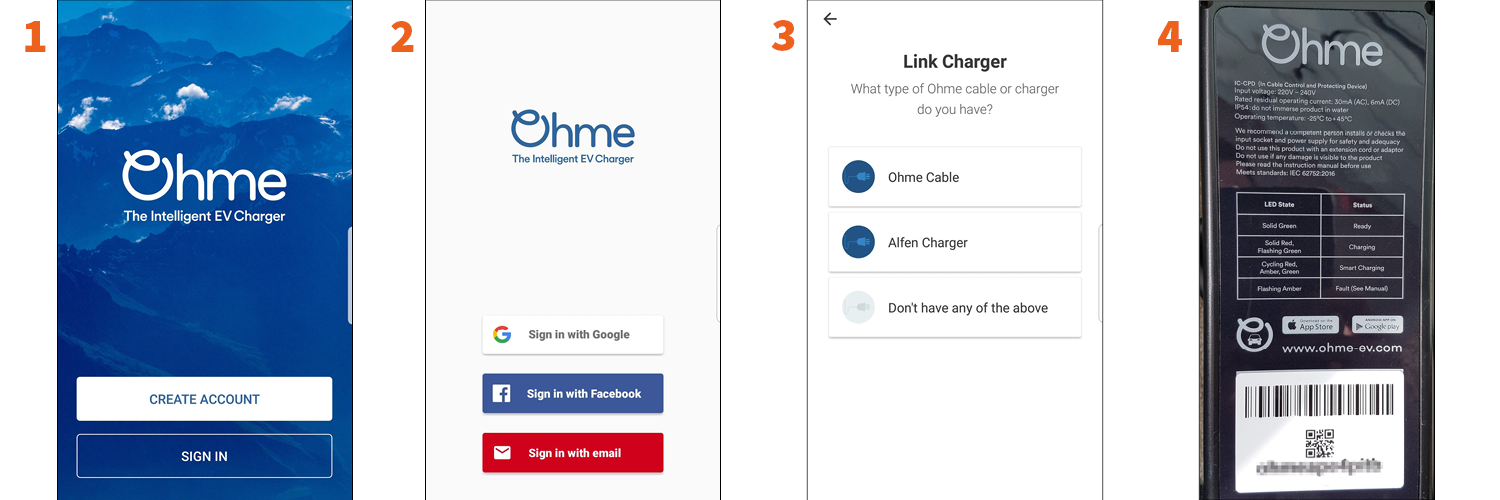
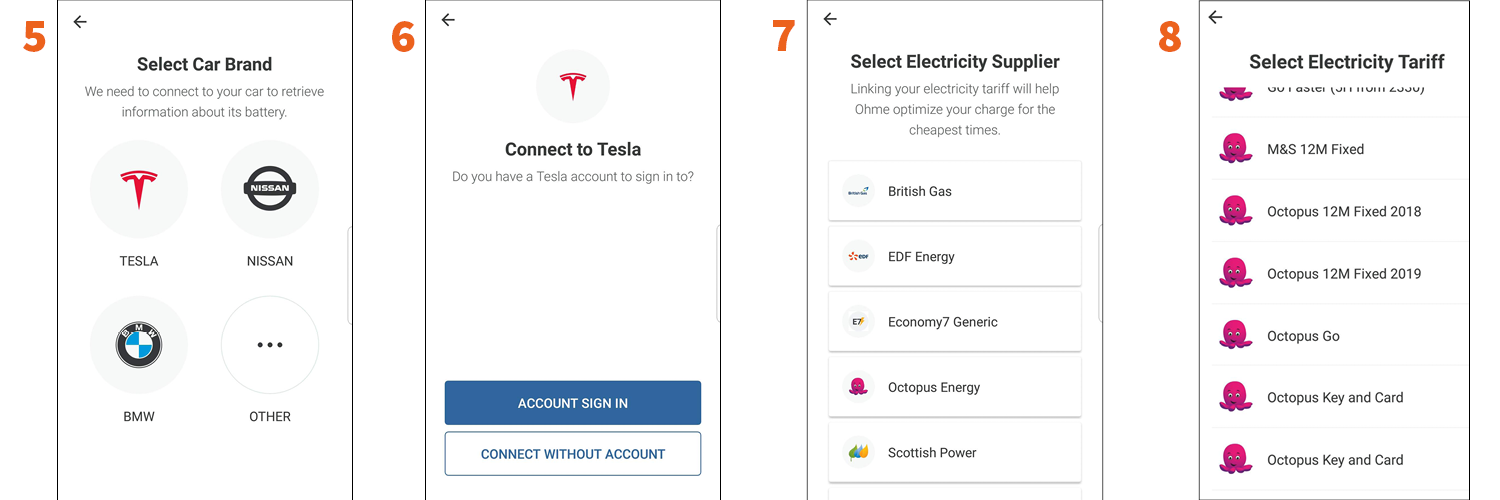
On the day of installation, plug the Ohme Home into the customer's car and make sure it is charging. If the customer's car hasn't been delivered, use the EV testing equipment to ensure the charger is functioning correctly.
Download our FREE Go Electric guide to home charger installation.

- Your FREE and exclusive interactive Go Electric guide
- The latest EV charger reviews
- New car releases and EV news
- App set-up guides and more electric car charging tips
You can unsubscribe at any time.
You are signing up to receive the Smart Home Charge newsletter. Terms and conditions apply.
